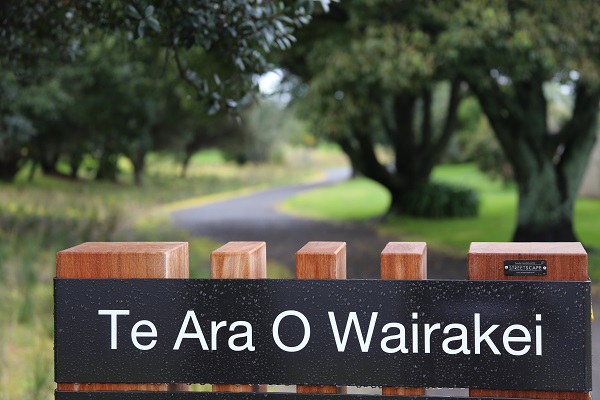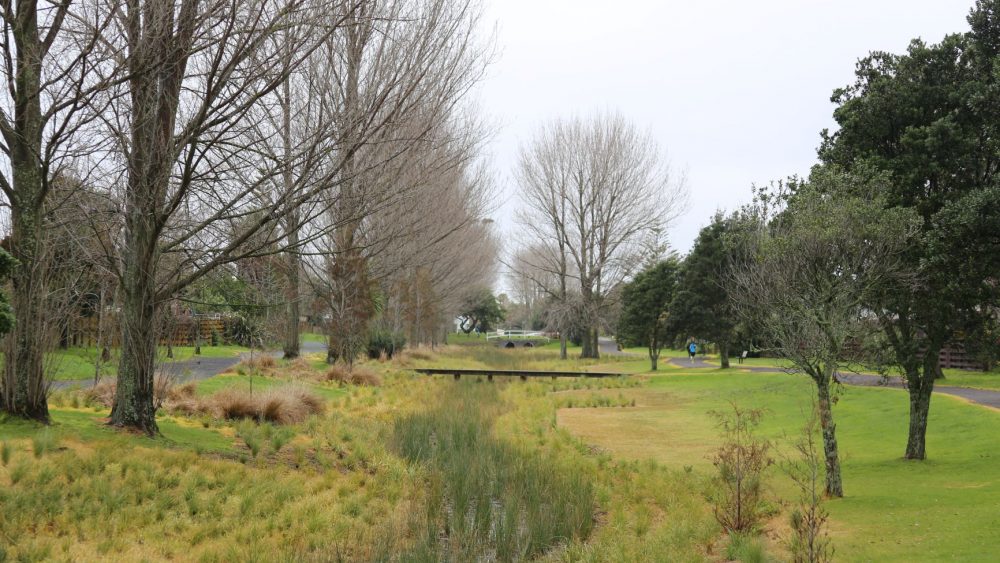As many Ngā Pōtiki uri will know from whānau kōrero, Wairākei Stream once teemed with native fish and birds.
It was connected to and fed into the vast wetlands that stretched across the Pāpāmoa coast behind the sand dunes.
To enable large-scale flax harvesting, then farming, and, later, residential development, those wetlands were gradually drained.
Over time, the Wairākei was cut off from both its headwaters in the Pāpāmoa Hills, and its natural coastal outlet into Te Moana-nui-a-Kiwa (the Pacific Ocean).
It is no longer a stream.
What exists now – a few streets back from the beach, wedged between residential subdivisions – is a substitute waterway that’s main purpose is flood control and stormwater disposal, treatment and storage.
That is why, for a long time, it was known as the Papamoa Main Drain.
Now, it is called Te Ara ō Wairākei – the path of Wairākei.
The new name acknowledges its rich ecological and cultural history.

Photos / Boffa Miskell
While this meandering network of stormwater ponds and canals remains a highly modified remnant of the original coastal wetlands, it is a far cry from the stream that was named “Wairākei” for its translucent water.
In summer, after long dry stretches without rain, algal blooms now often flare up and the water starts to stink.
Where Wairākei Stream once flowed freely through this corridor and emptied out into the sea, the water now sits stagnant.
And yet, remarkably, life remains – including some of our native taonga species, like tuna.
We have been working with Tauranga City Council and other iwi and hapū to make sure native species are given every opportunity to re-establish themselves and flourish in Te Ara ō Wairākei reserve.
The Te Ara ō Wairākei project is an opportunity to preserve and enhance what is left of the natural environment along this significantly important 15km green corridor.
One way of doing that is by carrying out native riparian planting along the waterway.
Already, hundreds of thousands of native plants have been planted.
Some of the native planting along Te Ara ō Wairākei will provide edge habitat for īnanga (which have an “At Risk – Declining” DoC conservation status), in anticipation of these fish returning to spawn.
Other indigenous plant species have been chosen to improve water quality (especially temperature), stabilise banks, and provide aquatic habitat for native resident species such as tuna – shortfin eel, and longfin eel (which also have an “At Risk – Declining” DoC conservation status).
The type of plants chosen will also reduce the potential for public/pet contact with water that is unsafe, reduce lawn clippings entering the ponds (which contributes to the algal blooms), and provide an easily maintained edge for mowing contractors.
But especially important for Ngā Pōtiki, the native planting will improve water quality and biodiversity, and that is something everyone will benefit from.



[…] week we jointly hosted an education day at Te Ara o Wairākei, the stormwater reserve in Pāpāmoa, with Tauranga City […]